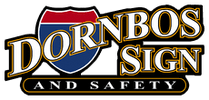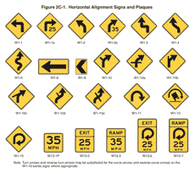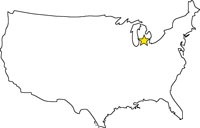MUTCD - WARNING SIGNS
15th Jan 2019
By 1935, automobile usage was gathering pace in the United States. This year marked the 32nd birthday of both the Ford Motor Company and its model A vehicle; developments which set the wheels in motion for more affordable autos for the masses.
It was also 22 years since the first assembly lines were introduced, and, by the mid 1930s, the sophisticated technology and design concepts which we recognize today were beginning to take shape. In 1932, the Ford Model B entered production. In only three years, over four million of these cars were produced, many for use on American roads.
This meant that auto driving was no longer an expensive hobby for the elite few. It had become viable means of transportation for America's middle class. What's more, the use of individual vehicles was no longer limited to short-term travel within one's home state. Interstate travel was becoming increasingly popular, and increasingly feasible. The car was here, and it was here to stay, so proper regulation was required.
So, in 1935, the first Manual on Uniform Traffic Control Devices - or MUTCD - for Streets and Highways was launched. This represented an attempt to standardize traffic signals, signs and markings, creating a universally understood language which road users could follow.
Today, more than eighty years on, the MUTCD continues to be implemented by the federal government. It has gone through many different incarnations and updates, but the aims and objectives of the document are the same today as they were in 1935: to uphold the safety and efficacy of the USA's road network.
Not all states follow the MUTCD to the letter. Eight states have a state implemented MUTCD code of their own, while a little over half of the remaining states operate the national MUTCD code with an additional supplement. However, the traffic signs and signals of all of America's states and territories are based upon this core document.
The MUTCD Sign Chart
As you will have noticed while driving up and down US roads, there is an enormous variety of different signs and messages displayed to drivers. It will come as no surprise to find that the MUTCD's sign chart is a large and comprehensive one.
In this article, we will look at the different categories of signs covered by the MUTCD, and what drivers can expect from each.
The R Series
The R Series of signs within the MUTCD's code are designed to regulate the movement of traffic around the road system. There are sixteen components to this series, each of which is designed to give specific instruction to drivers and to uphold the rules and laws of the road.
Some of these signs feature distinctive shapes - such as the iconic octagonal STOP sign, or the inverted triangle of the YIELD or GIVE WAY signs - but many of them simply feature information, which it is pertinent for the driver to know at any given moment.
As the United States is governed by a variety of different state laws as well as the overall federal code, there are many regional variations to the R Series of signs. However, the central concepts are the same.
Information is delivered via direct visual representation, via written instruction, or via a combination of the two. A list of the different sub sections within the R Series is found below.
- R1: Stop and Give Way
- R2: Speed Limitations
- R3: Turns, Curves and Lane Usage
- R4: Traffic Movement Regulation
- R5: Exclusions
- R6: One Way Systems and Highway Divisions
- R7: Parking Regulation
- R8: Emergency Parking and Restrictions
- R9: Pedestrians and Cyclists
- R10: Traffic Signal Regulation
- R11: Road Closure
- R12: Weight Limit
- R13: Weighing Stations
- R14: Truck Routes
- R15: Rail
- R16: Headlight and Seat Belt Regulation
The S Series
The S Series of signs is a small category but one which is very important in terms of safety. These signs refer to schools. They inform drivers about hazards associated with schools - such as children crossing, parked cars in the morning and afternoon, and access requirements - as well as advisories about the regulations which govern school zones.
The W Series
The W Series of signs differ from the Regulatory R Series in that they are designed to warn the public about potential road hazards. The idea behind the W Series is to encourage drivers to modify their behavior and driving habits accordingly.
Of all the categories contained within the MUTCD, the W Series is the largest in terms of the number of subdivisions, with 25 of these subdivisions in total. All of the signs covered by each subdivision are designed to be universal, however, differences between state laws in parts of the USA mean that some states issue their own warning signs.
As warning signs relate to genuine hazards that road users may encounter, they serve an important legal function. A visible sign installed along a road represents a warning served to drivers using that road. Failure to respond to the warning, or failure to adhere to its recommendation, may be used by legal bodies to determine who is at fault in the event of an accident.
A full list of the W Series subdivisions are included below;
- W1: Turns and Road Curves
- W2: Crossroads and Intersections
- W3: Advance Warning of Changes in Traffic Control Measures
- W4: Lanes and Merges
- W5: Changes to Road Width
- W6: Highway Divisions
- W7: Hills
- W8: Changes to Road Conditions
- W9: Lane Transitions
- W10: Railroads
- W11: Warnings Regarding Road Crossings
- W12: Low Clearances
- W13: Speed Advice
- W14: No Passing Areas and Dead Ends
- W15: Playgrounds
- W16: Supplemental Signs for Additional Information
- W17: Speed Humps and Traffic Calming Measures
- W18: Areas with No Signage
- W19: End of Controlled Access Highway
- W20: Roadwork Areas and Barricades
- W21: Roadwork Considerations
- W22: Blasting Zones
- W23: Areas of Slow Traffic
- W24: Lane Shifts
- W25: Extended Green Light Privilege for Approaching Traffic
Guidance Signs
Guidance signs do not warn or regulate, instead simply offering road users information about where they are in the country, how to access other roads, and what type of road they are on.
This is an incredibly diverse category of signage, but as the signs do not relate to legal or regulatory matters - at least in the main - these are not subdivided further.
Drivers will see many different types of guidance signs as they travel around, but all will conform to the conventions laid out in MUTCD.




